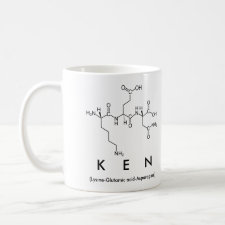
Authors: Spivak DA, Shea KJ
Article Title: Investigation into the scope and limitations of molecular imprinting with DNA molecules.
Publication date: 2001
Journal: Analytica Chimica Acta
Volume: 435
Issue: (1)
Page numbers: 65-74.
DOI: 10.1016/S0003-2670(00)01333-7
Abstract: A brief account of the historical development of molecular imprinting introduces the connection between materials properties and recognition in molecularly imprinted polymers (MIPs). polymers imprinted with DNA derivatives were investigated to understand the underlying principles governing the design, synthesis and application of imprinted polymer materials. A survey of 9-ethyladenine (9EA) imprinted polymers revealed an optimum mol% of cross-linking monomer to be in the range 70-80%, due to a balance of pre-polymer complexation and restriction of random polymer chain motion. MIPs to 9- ethyladenine using different porogens determined that binding site fidelity is best preserved when rebinding solvent matches the porogen. Colder temperatures and initiator concentration of 1 mol% or higher also improve the performance of 9EA imprinted polymers. All nucleosides were imprinted, revealing that only those with the 2-aminopyridine substructure show binding affinity and selectivity. Last, polymer complements to an adenine dimer and tetramer showed selectivity for the dimer, however, the tetramer exhibited little affinity for any imprinted or control polymers. If the lack of binding exhibited by the tetramer is due to size effects, this would set the upper limit of molecular size for molecular imprinting at approximately 20-30 Angstrom. (C) 2001 Elsevier Science B.V. All rights reserved
Template and target information: 9-ethyladenine, 9EA



Join the Society for Molecular Imprinting

New items RSS feed
Sign-up for e-mail updates:
Choose between receiving an occasional newsletter or more frequent e-mail alerts.
Click here to go to the sign-up page.
Is your name elemental or peptidic? Enter your name and find out by clicking either of the buttons below!
Other products you may like:
 MIPdatabase
MIPdatabase









